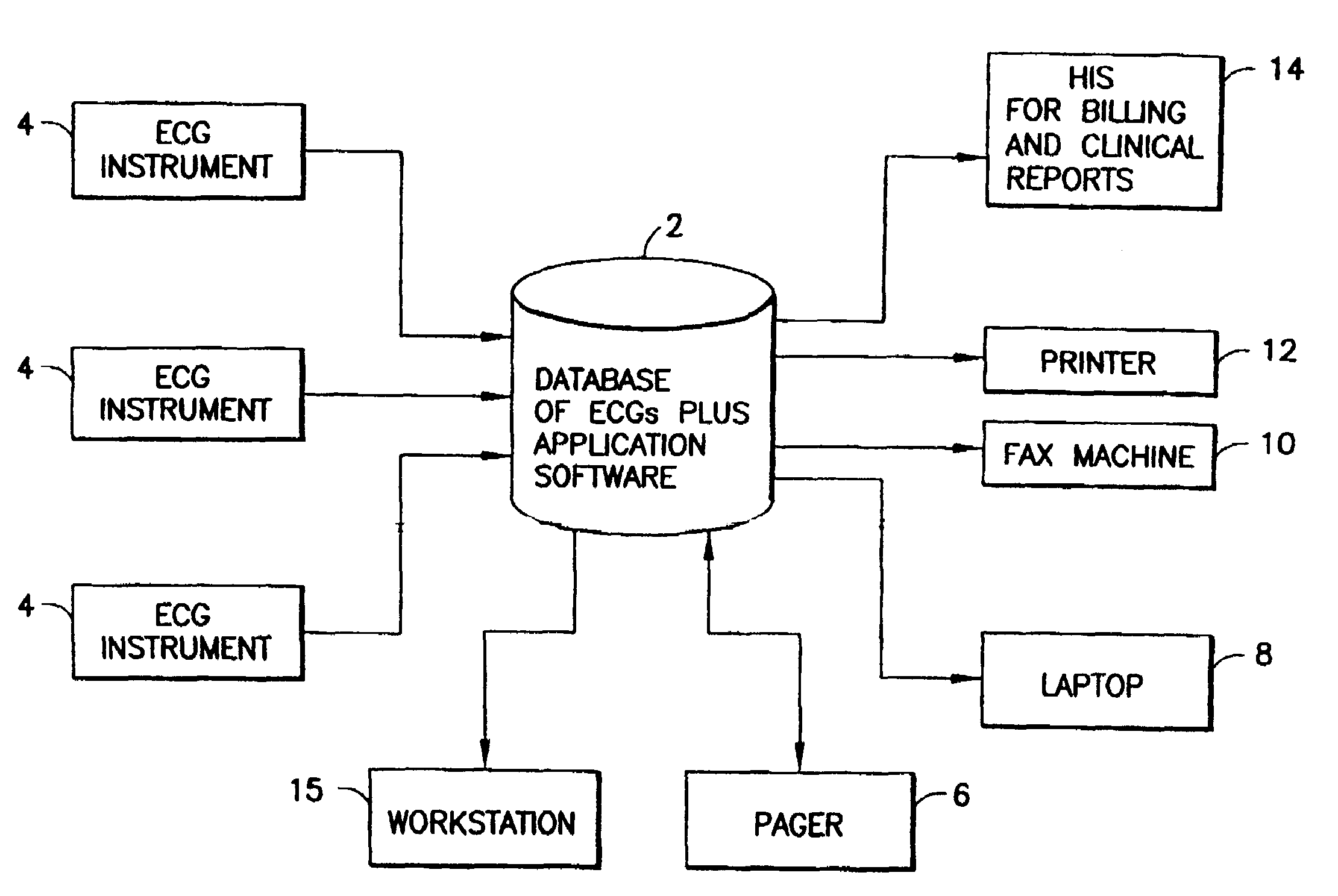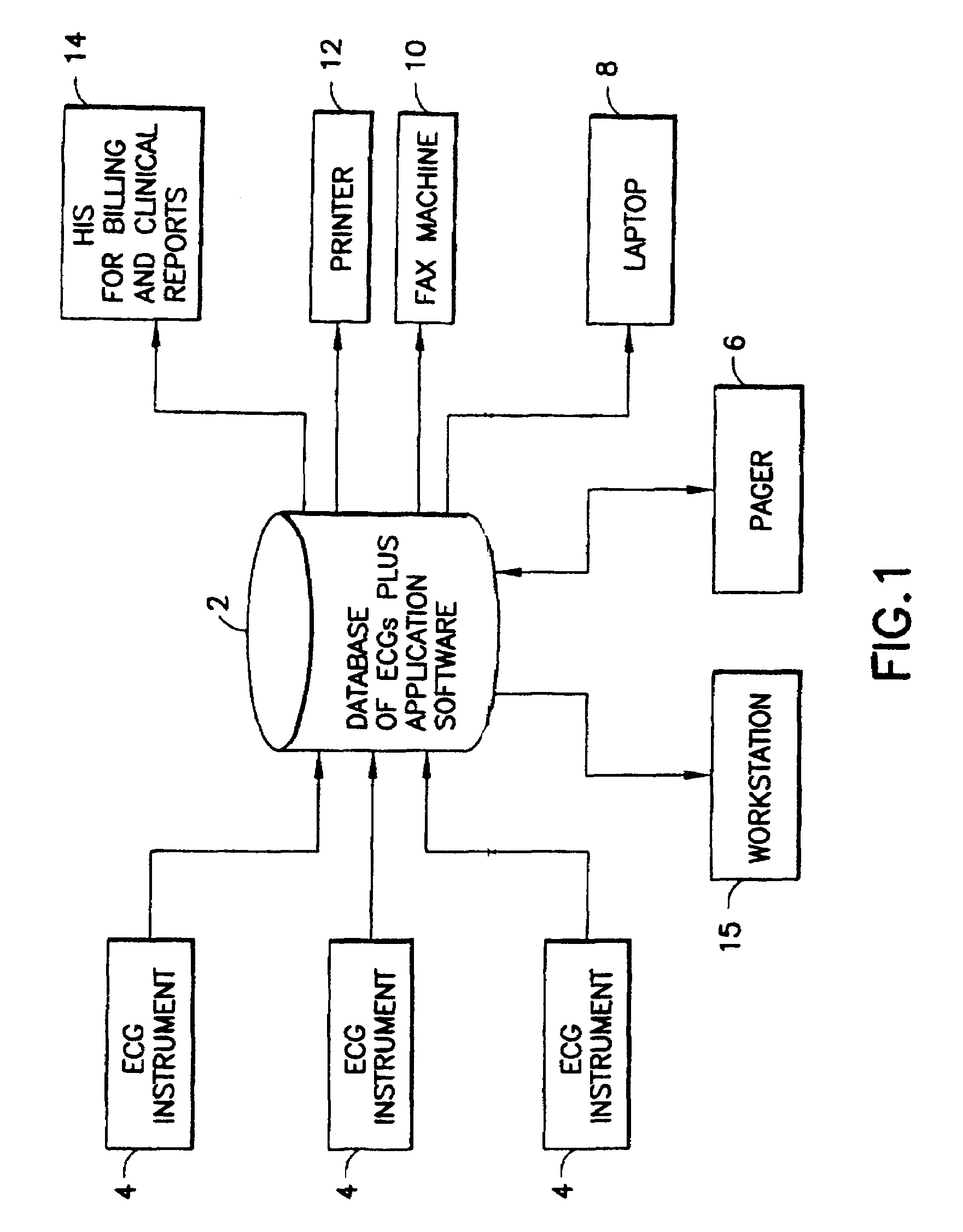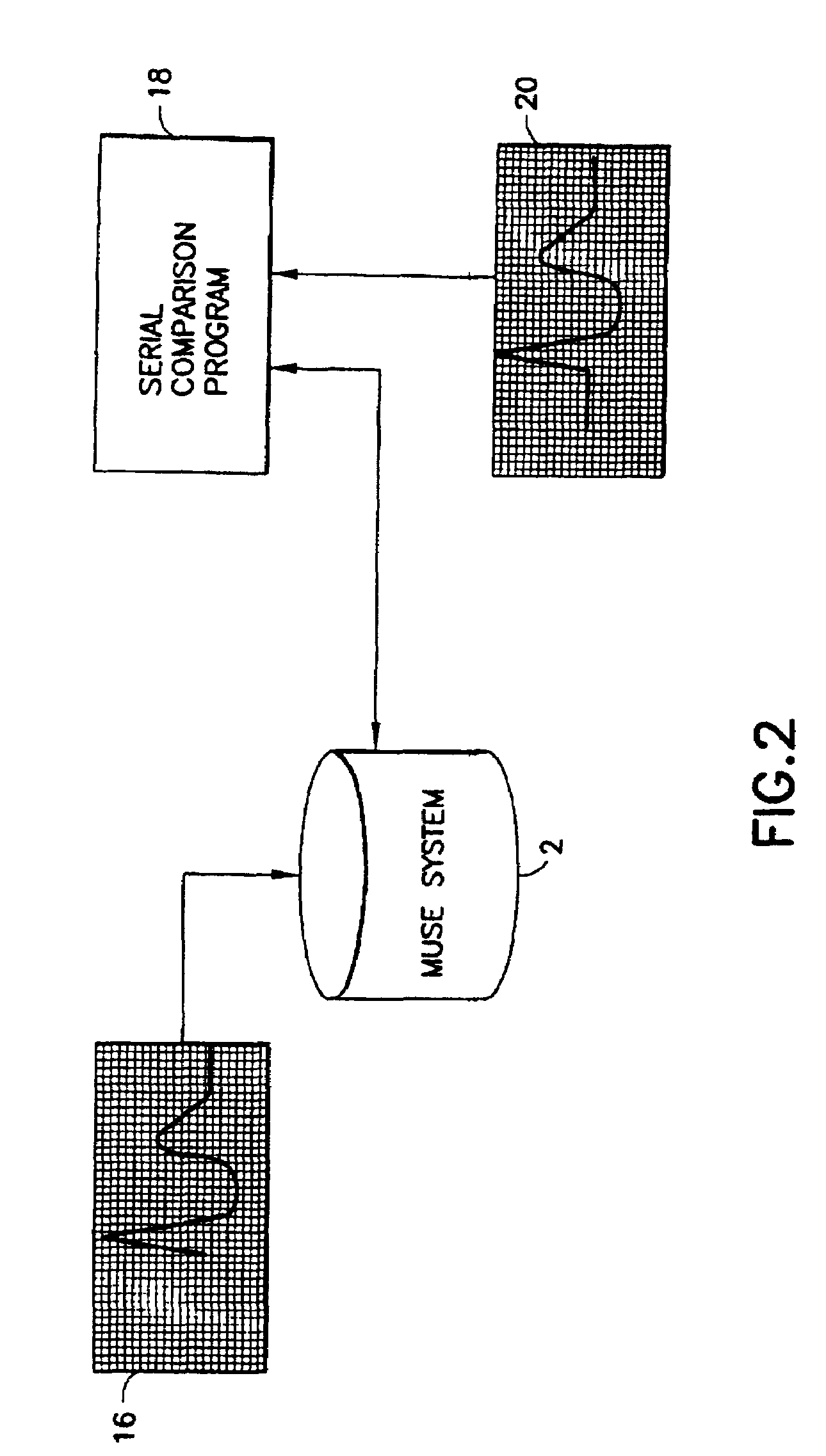Automated scheduling of emergency procedure based on identification of high-risk patient
a high-risk patient and automatic scheduling technology, applied in the field of timely emergency treatment, can solve the problem that the computer measurement of features within the qrs complex is very susceptible to artifacts
- Summary
- Abstract
- Description
- Claims
- Application Information
AI Technical Summary
Benefits of technology
Problems solved by technology
Method used
Image
Examples
Embodiment Construction
[0031]Referring to FIG. 1, the MUSED ECG management system 2 comprises a database of ECGs and applications software. The software is executed by a conventional server which communicates with a TCP / IP network. The ECGs are stored in a suitable storage medium which is accessible by the server. Any other suitable computer hardware may be used. The MUSE® system 2 receives ECG data from a multiplicity of instruments 4 via a plurality of networks, analyzes that ECG data using various programs such as the serial comparison program, generates reports containing the results of the analysis, and then routes those reports to various systems and peripheral devices. In particular, the MUSE® system has automatic report routing which can send reports to a digital pager 6, a laptop computer 8 (via e-mail), a fax machine 10, a printer 12, a hospital information system 14 for billing and clinical reports, a workstation 15, and other servers on the local area network to which the MUSE® system is conne...
PUM
 Login to View More
Login to View More Abstract
Description
Claims
Application Information
 Login to View More
Login to View More - R&D
- Intellectual Property
- Life Sciences
- Materials
- Tech Scout
- Unparalleled Data Quality
- Higher Quality Content
- 60% Fewer Hallucinations
Browse by: Latest US Patents, China's latest patents, Technical Efficacy Thesaurus, Application Domain, Technology Topic, Popular Technical Reports.
© 2025 PatSnap. All rights reserved.Legal|Privacy policy|Modern Slavery Act Transparency Statement|Sitemap|About US| Contact US: help@patsnap.com



